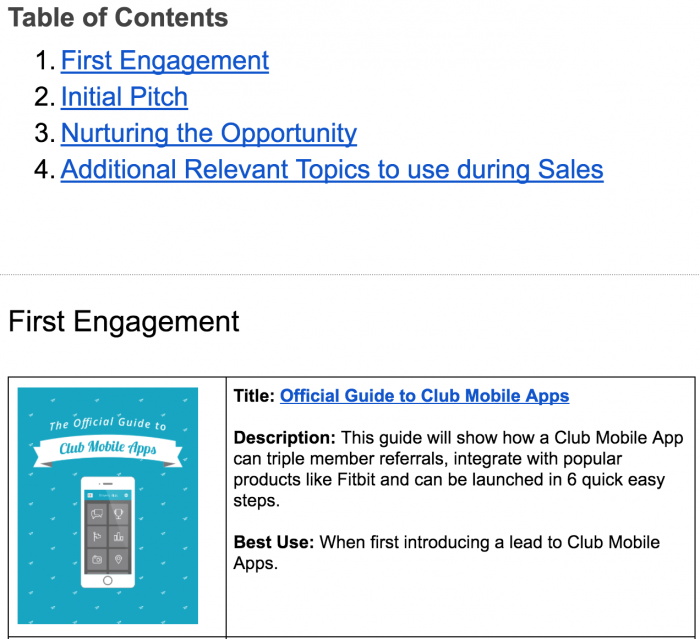This is article #39 out of 50 in The Startup Marketing Playbook.
One of the most frequent requests that the marketing team receives from the sales team is for new collateral. It seems like whenever a new objection is encountered or new use-case identified, additional flyers or ebooks are requested. Needless to say, a growing company’s collateral can quickly become unorganized and disjointed. In order to maintain structure, consider the following guidelines:
1. Define an owner: Product Marketing
The ideal owner for collateral is the Product Marketing Manager (PMM). They should be listening to sales calls, interviewing customers and crafting the company’s messaging and positioning story. While many stakeholders will be pushing for different collateral items, the PMM needs to act as the central hub, prioritizing the collateral roadmap.
2. Start with sales objections
As you’re considering what collateral is needed, it’s best to start with the question “where does the sales process get stuck?” Are there specific objections where you can use a collateral item, whether a case study or infographic, to alleviate a prospect’s concerns? Aside from objections, collateral is best grouped by individual features or feature categorgies.
As you document features and objections, it should be easy to create a long list of potential topics to use for sales collateral. Be aware of the pitfalls of having too much collateral: it’s tough to manage and puts sales reps in “analysis paralysis”… unsure of what to use. When in doubt, start with “less is more.”
3. Vary the mediums: PDF, video, infographic
Similar to inbound marketing campaigns, different buyer personas will be attracted to different mediums of sales collateral, so it’s best to diversify. You should have a standard set of PDF 1 pagers, a product video, case studies and infographics that break down the ROI case for your product.
4. Keep it organized in a shared drive
As collateral piles up, sales reps download a version to their desktop. This can be frustrating when marketing creates updated versions and sales is using old versions. To avoid that issue, stick with shared drives (e.g. Google Drive, Dropbox) to host collateral. Your marketing automation system, such as Hubspot, usually has the ability to host files as well. This way, when marketing makes collateral updates, sales automatically recieves the new version.
5. Develop guides for use
With so much collateral, sometimes sales reps are unsure of which item is best to use at each stage of the buyer journey. Marketing should develop a strategy and create handy guides that list each collateral item, explain how it is used and which buyer personas it works best for.
6. Make it trackable online
There are handy tools that help manage collateral and track its use. Wouldn’t it be amazing for sales to know when a prospect is opening collateral, and marketing to know which collateral is most impactful in the sales process? Consider purchasing a tool like Hubspot Sales that has document tracking.
7. View it as constantly evolving
For better or worse, your job is never finished with collateral. You need to constantly tweak messaging, remove ineffective pieces and replace them with new versions. Just as product has a roadmap, consider having a “Collateral Roadmap” that aligns with product updates and marketing campaigns.
